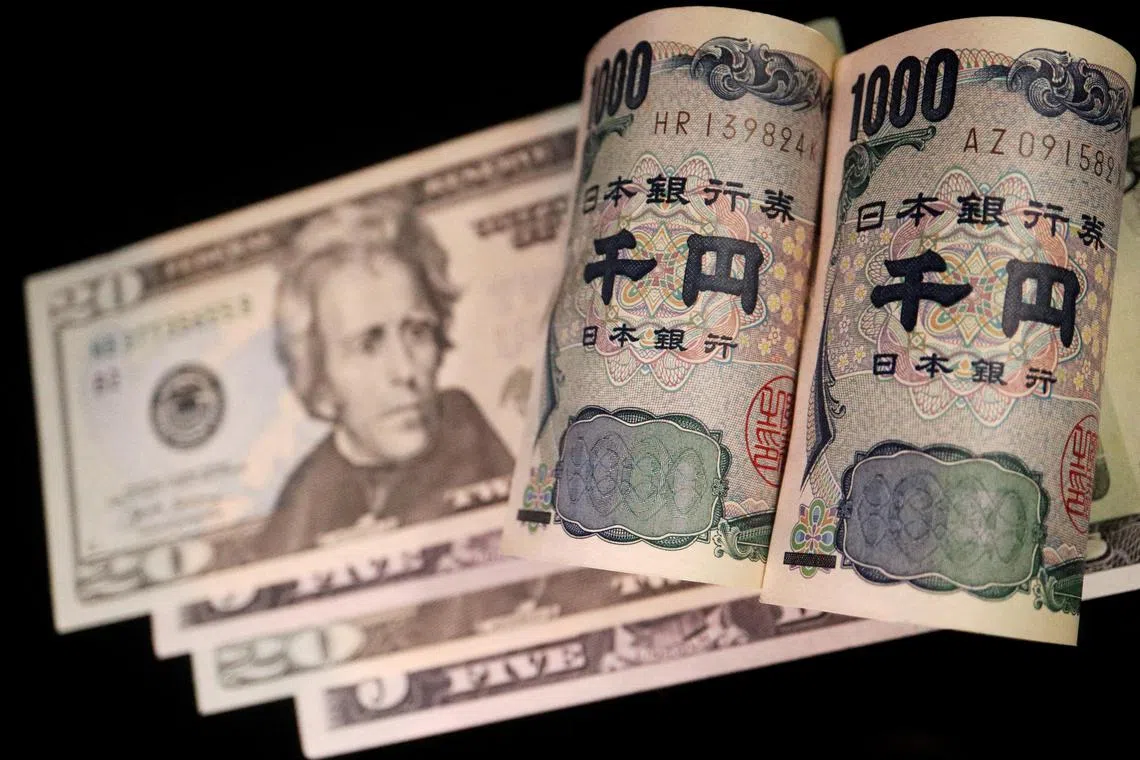Bank of Japan switching gears may spell end of record US dollar bull run
Sign up now: Get ST's newsletters delivered to your inbox

The Bank of Japan finally relaxed its grip on long-term interest rates, pushing the yen up 4 per cent against the US dollar.
PHOTO: REUTERS
Follow topic:
LONDON – The US dollar’s biggest bull run in 40 years may have finally come to a screeching halt, now that the world’s last dovish central bank – the Bank of Japan (BOJ) – has finally relaxed its iron grip on long-term interest rates.
The BOJ shocked markets on Tuesday with a surprise tweak to bond yield control, allowing long-term interest rates to rise more in a move that is aimed at easing some of the costs of prolonged monetary stimulus.
Benchmark Japanese 10-year yields rose to their highest in seven years – effectively doubling long-term borrowing costs.
BOJ governor Haruhiko Kuroda, who steps down in April, said this is a technical measure aimed at improving the way the bond market works and not a form of monetary tightening.
The timing caught investors off guard, pushing the yen up roughly 4 per cent against the United States dollar on Tuesday, its largest one-day gain in 24 years.
The greenback regained some ground to trade up 0.02 per cent at 131.75 yen on Wednesday.
Against the Singapore dollar, the US unit was relatively unchanged on Wednesday. It edged down 0.06 per cent to 1.3507 as at 5.30pm, after slipping 0.25 per cent to 1.3515 on Tuesday.
The Japanese central bank’s move will likely reduce demand for US Treasuries, analysts said. Japan, the world’s largest non-US holder of US government debt, has reduced its load of Treasuries for the past several months, selling them to defend the yen that at one point lost about 25 per cent of its value against the dollar and as hedging costs have skyrocketed.
The dollar has risen 9 per cent in 2022 as the Federal Reserve jacked up interest rates to combat inflation at 40-year highs.
It has clocked the most gains against the yen, which has been weighed down by the BOJ’s policy of controlling longer-term yields.
As other central banks, from the Bank of England to the European Central Bank and the Reserve Bank of Australia, have raised their own rates, dollar bulls have run out of puff.
Against a basket of major currencies, the US currency is heading for its biggest quarterly loss since late 2010. But the dollar could, until now, count on its edge against the yen to prolong its bull run.
Societe Generale head of FX strategy Kit Juckes said the dollar’s second-biggest run-up since February 1985 is effectively over.
“However we dress up the world, the Fed is crawling towards the end of its rate-hiking cycle,” Mr Juckes said.
“The rate hikes are going to get smaller and smaller and, eventually, there will be nothing and that will be the end of that story.”
JPMorgan credit strategists Eric Beinstein and Nathaniel Rosenbaum said: “The question will now centre on whether the market believes the BOJ that this is simply a technical adjustment or the beginning of a more profound hawkish pivot.
“The latter would imply more rate volatility, but also a path to eventual lower hedging costs.” REUTERS

